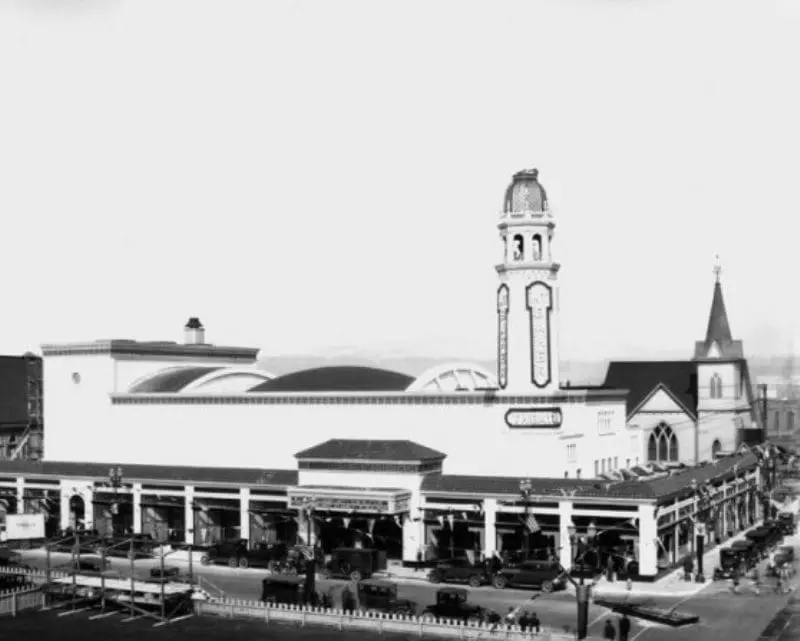
The Mount Baker Theatre was constructed in 1927 as part of the Fox West Coast Theatre chain of film and Vaudeville movie palaces. The same architect who created the Old Faithful lodge in Yellowstone National Park, R.C. Reamer, designed Mt. Baker theatre and four others (including the Fifth Avenue theatre in Seattle) in the Northwest region. After more than sixty years of continuous commercial operation and numerous ownership changes, the Mt. Baker Theatre has survived virtually unaltered.
The visually dominant feature of this strikingly bright building is the red tiled roof of the marquee tower that displays the theatre’s name. The Theatre was one of the first reinforced concrete structures in the Pacific Northwest. Another probable first the Mt. Baker Theatre can claim is the nation’s first installation of a Hope-Jones Wurlitzer organ in 1927, still in regular use before screenings. To better accommodate a wide variety of performances, the depth dimension of the original stage has been increased from 26 feet to 40; the width of the stage remains the same.
Before the Mt. Baker Theatre was placed on the National Historic list in 1978, the 1971 state legislature attempted to acquire it for Western Washington University located in Bellingham to ensure its protection. When plans were announced to split the auditorium in two in 1980, that would have ended all live performances, the public rallied to preserve this landmark. In 1983, a non-profit corporation, the Mount Baker Theatre Committee, formed and within a year purchased the theatre transferring the title to public ownership.

Since then the theatre has undergone a series of alterations to improve its vitality. It was awarded a Historic Community Theatre Development Grant in 1991 that allowed for safety repairs to the auditorium lights and restoration of the marquee and tower lighting; minor alterations also occurred in 1993 and 1995. The Mount Baker Theatre has been a characteristic trademark of the city of Bellingham since it was erected in 1927 and will continue to impress people as a National and Local landmark.
